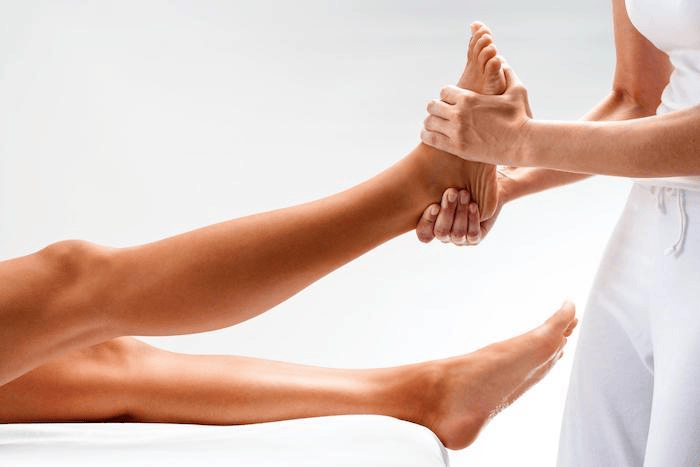Foot Drop Treatment

Foot drop, also known as drop foot, is a medical condition characterized by difficulty or inability to lift the front part of the foot. This can result in dragging the foot on the ground while walking. The condition can affect one or both feet and may cause instability and difficulty in walking.
Foot drop can be caused by various underlying conditions, including:
Nerve damage: Conditions such as peripheral neuropathy, nerve compression (e.g., from a herniated disc), or nerve injuries can lead to foot drop.
Muscle or nerve disorders: Certain muscular or neurological disorders, such as muscular dystrophy or amyotrophic lateral sclerosis (ALS), can affect the muscles and nerves involved in foot movement.
Stroke: Damage to the parts of the brain responsible for controlling muscles and movement can lead to foot drop.
Multiple sclerosis (MS): This autoimmune disease affects the central nervous system, including the nerves that control foot movement.
Injuries: Trauma to the peroneal nerve, which controls the muscles that lift the foot, can result in foot drop.
Spinal cord disorders: Conditions affecting the spinal cord, such as spinal stenosis or herniated discs, can lead to nerve compression and foot drop.
If you or someone you know is experiencing foot drop, it's important to seek professional medical advice for an accurate diagnosis and appropriate treatment. The foot drop treatment in Delhi NCR depends on the underlying cause.
Treatment for Foot Drop:
Physical Therapy: This is a key component in the treatment of foot drop.
Exercise Programs: Targeted exercises can help strengthen the muscles involved in foot movement and improve overall coordination.
Stretching Routines: Stretching exercises may be prescribed to enhance flexibility and prevent muscle stiffness.
Bracing and Splinting: Orthotic Devices such as Ankle-foot orthoses (AFOs) or braces may be recommended to provide support and prevent the foot from dropping. These devices help maintain a more natural walking pattern.
Functional Electrical Stimulation (FES): Nerve Stimulation with FES devices can be used to stimulate the nerves and muscles, promoting better foot movement. This can be particularly beneficial for certain neurological conditions.
Medications: Pain Management - In some cases, medications may be prescribed to manage pain or reduce inflammation associated with the underlying condition.
Surgery: Nerve Decompression - Surgical procedures may be considered to relieve pressure on nerves or repair damaged nerves. Tendon Transfer - In cases of severe weakness or paralysis, tendon transfer surgeries may be performed to improve foot function.
Gait Training: Assistive Devices - Training with assistive devices like canes or walkers can help individuals with foot drop maintain stability and improve their walking pattern.
Management of Underlying Conditions: Treating the Root Cause - Addressing the underlying condition contributing to foot drop is crucial. This may involve managing diabetes, treating neurological disorders, or addressing spinal cord issues.
Lifestyle Modifications: Adaptive Techniques - Learning and incorporating adaptive techniques into daily activities can help individuals cope with the challenges of foot drop.

